This morning I was on the 88 bus heading south down Whitehall. Despite the braying of a Westminster policy wonk sitting behind me, I loved seeing the wonderful buildings (my favourites are Georgian, of course). Here are some views of the area made in earlier (though not necessarily more tranquil) times.
This is one of 3 posts.
We’ll start with this 18th-century view looking south, with Banqueting House on the left and the Tudor Holbein Gate ahead.1
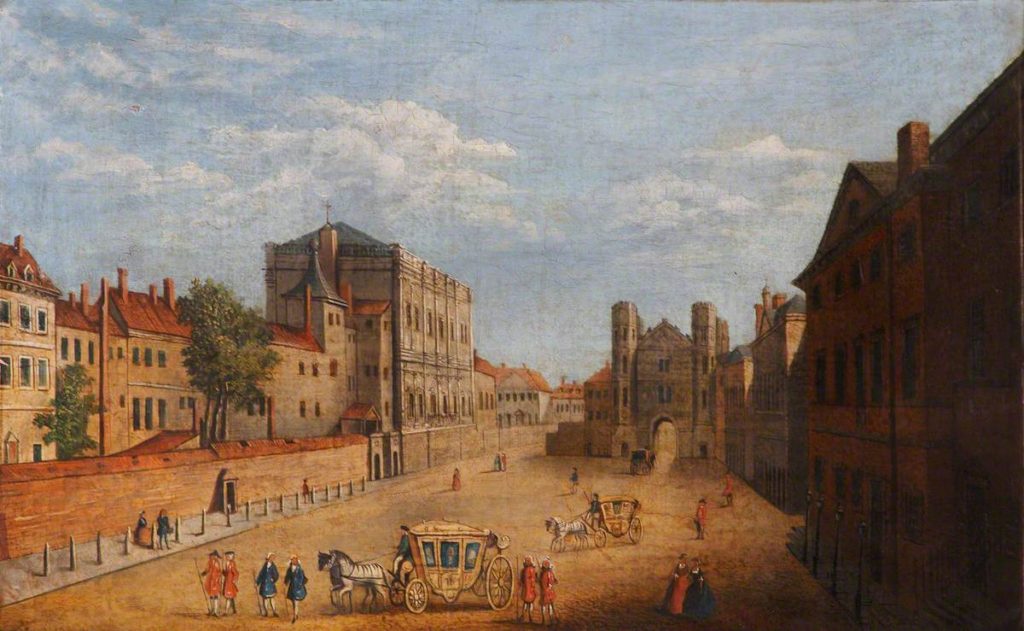
Whitehall, London (British School, early 18th century) looking south, showing Banqueting House on the left. Courtesy of National Trust Collections. Photo credit: National Trust Images
Here is Holbein Gate, this time, depicted from the south looking north, in a print by Thomas Sandby,2 which the Yale Center for British Art dates as 1760 but is possibly earlier. The Gate was demolished in 1759. 3

Thomas Sandby, Whitehall Showing Holbein’s Gate and Banqueting Hall (1760). Courtesy of Yale Center for British Art, Paul Mellon Collection.
Still looking north, perhaps from about the spot where Holbein Gate once stood, here is William Marlow’s 1775 view. In the distance is King’s Mews,4 where Trafalgar Square is now. Banqueting House is on the right and you can see Horse Guards (built 1750-1753) on the left – note the sentry boxes. The spire of St Martin in the Fields rises above the buildings.
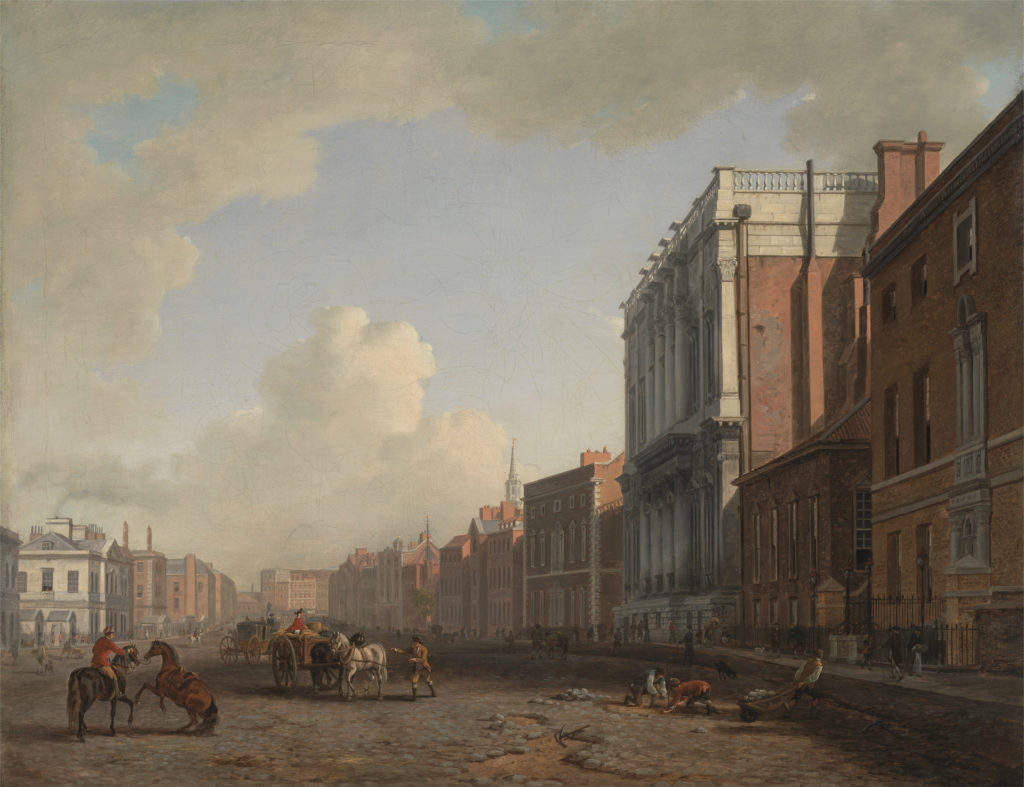
William Marlow, Whitehall (c. 1775). Courtesy of Yale Center for British Art, Paul Mellon Collection.
This print, showing a detailed view of Horse Guards, by Thomas Malton the Younger, probably from the late 18th century or early 19th, is my favourite. Note the genteel lady on the left conversing with or giving alms to the beggar woman.
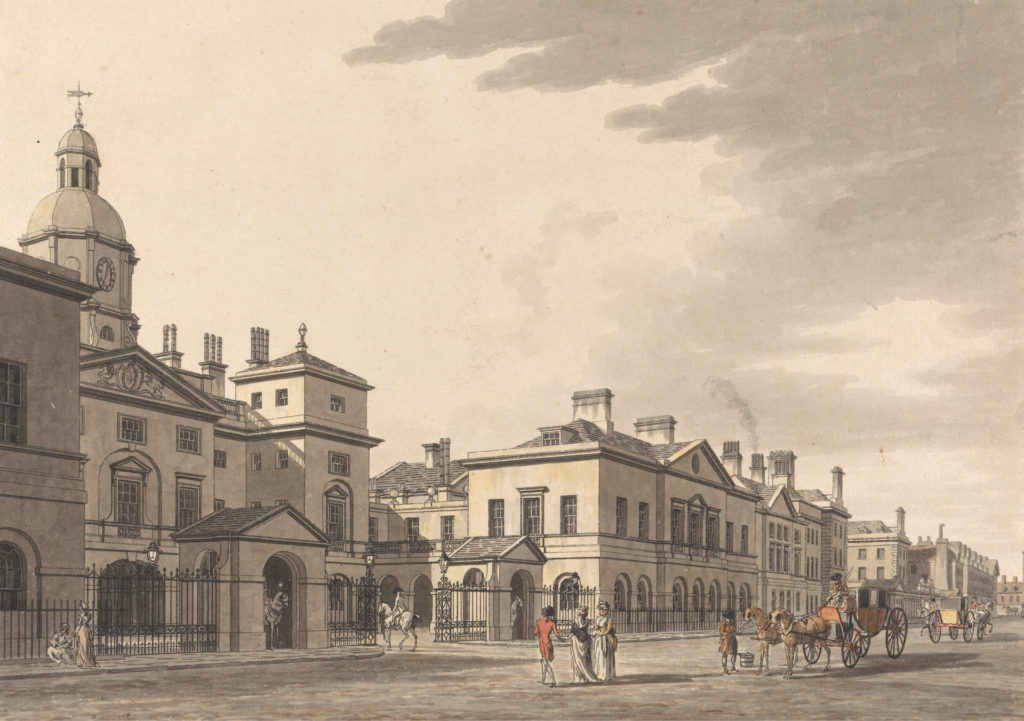
Horse Guards, Whitehall, Thomas Malton the Younger (1748-1804), undated. Courtesy of Yale Center for British Art, Paul Mellon Collection.
A print from 1810 from The Beauties of England offers a roughly similar aspect to the William Marlow.
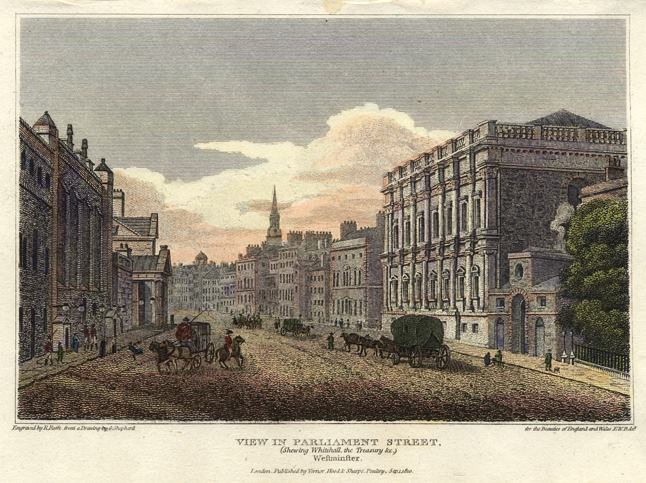
Parliament Street, (Showing Whitehall, Treasury &c.) Westminster, published in The Beauties of England and Wales (1810). Courtesy of ancestryimages.com
Banqueting House has not changed a great deal since it was completed in 1622. Inigo Jones’s building replaced an earlier one, which was destroyed when workmen decided to burn rubbish inside. Here is a relatively recent view.
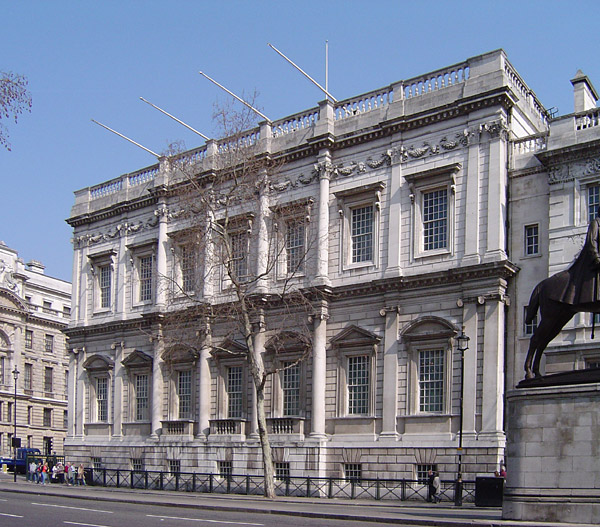
Banqueting House, Whitehall, 2004 (ChrisO, 2004), Licensed under the Creative Commons Attribution-Share Alike 3.0 license.
Melbourne House, on the right as you look south, is now called Dover House and accommodates the Scotland Office. Originally designed as a private residence, it was occupied by, among others, the 1st Duke of Montagu, Prince Frederick, Duke of York, and Lady Caroline Lamb.5 Note the smoking chimneys.
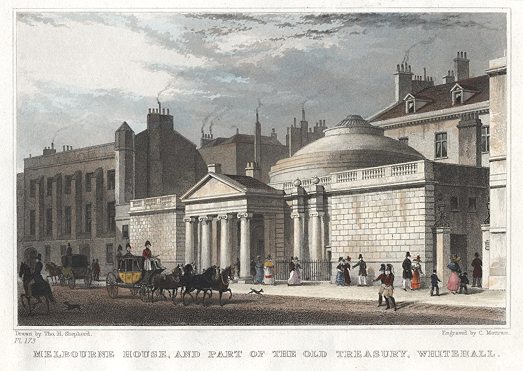
Melbourne House, and part of the Old Treasury, Whitehall, engraved by C. Motram after T.H. Shepherd, published in London in the Nineteenth Century, (1831).
An up-to-date view (no smoking chimneys).
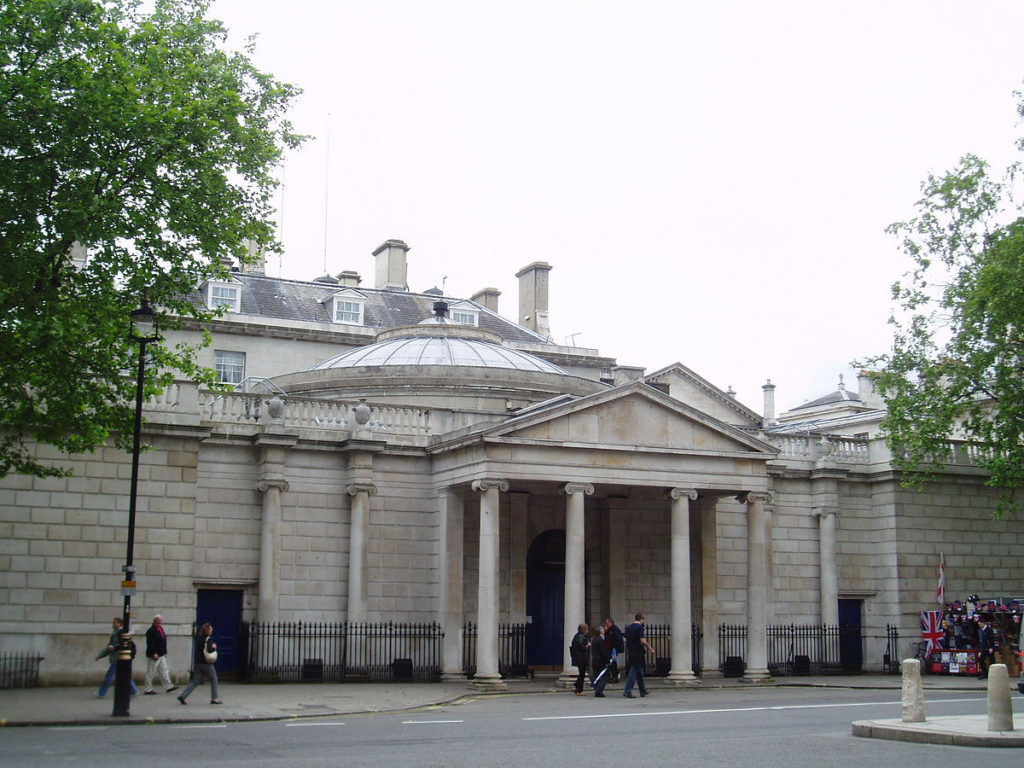
Dover House, Whitehall by Steve Cadman. CC BY-SA 2.0
- Holbein Gate (also known as the King’s Gate or the Cockpit Gate) was built by Henry VIII and survived until its demolition in 1759.
- Brother of Paul Sandby.
- Brother of Paul Sandby.
- This was an area where the royal hawks were once kept; the mews were rebuilt as stables in the 16th century, but these were moved to Buckingham Palace by George IV. The construction of Trafalgar Square finished in 1844.
- Lady Caroline Lamb was obsessed with Lord Byron during her marriage to William Lamb, who later became Lord Melbourne
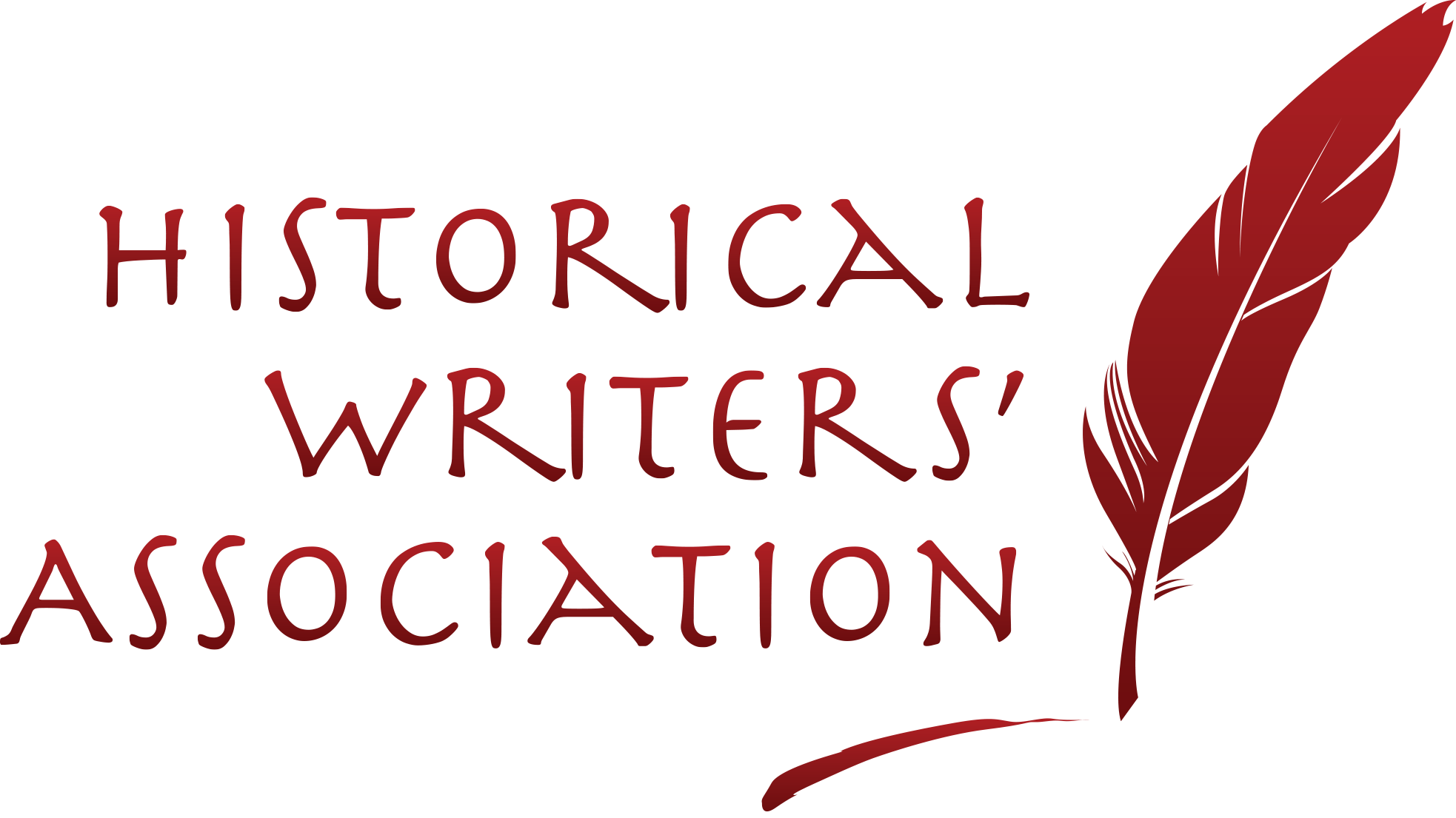
Leave a Reply